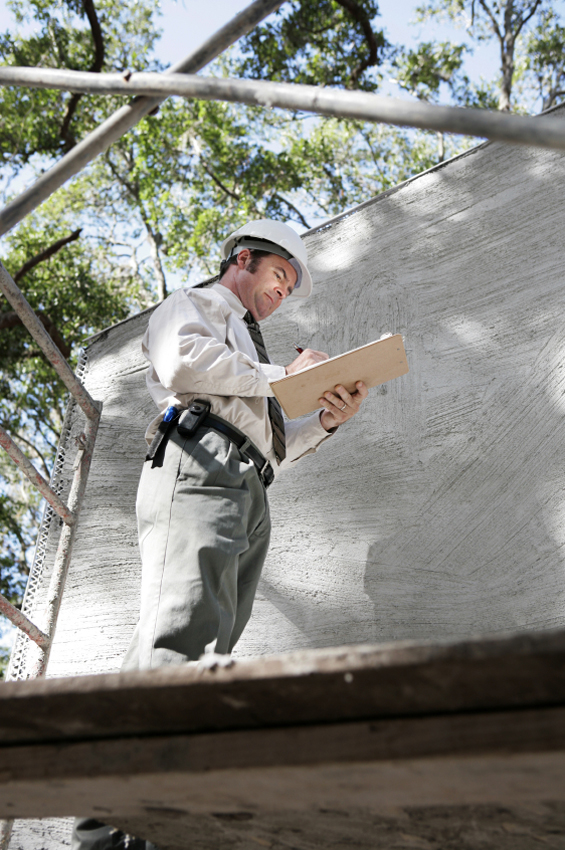Building Inspectors and Mesothelioma
Mesothelioma Risk is Very Serious for Building Inspectors
You inspect buildings for a living.
You inspect them when they are under original construction, and you inspect them when they are being renovated, remodeled or expanded.
In the course of all that inspecting, you come into contact with dangerous levels of asbestos. Consequently, you run a moderate to high risk of developing mesothelioma.
Among the asbestos-containing building materials you encounter are:
- Drywall
- Roofing
- Insulation
- Concrete pipes
As a building inspector, you come into contact with these and other asbestos-containing products at a variety of stages throughout the construction process.
You also come into contact with them at times when they are likely to create more, not less, asbestos exposure risk for you and others.
Why Asbestos Is Used in Buildings

Asbestos is a mineral. It has many uses. In construction, its uses include making things fire-safe, shielding people and objects from super-hot heat, and giving materials extra strength and durability.
Asbestos also helps construction materials look better. Producers of building supplies use asbestos because it works very well, is plentiful and costs relatively little.
Unfortunately, asbestos has the drawback of being a serious threat to human health.
The stuff is toxic. But the effects of its toxicity aren’t felt right away if you happen to come into contact with asbestos.
The effect takes decades to show up. When it does, it’s usually in the form of mesothelioma.
It’s for this reason that the government ordered manufacturers of construction materials back in the early 1980s to find alternatives to asbestos — safe alternatives.
Today, drywall, roofing, insulation, concrete pipes and other products for erecting a home, office, institution or plant must by law and regulation contain no asbestos.
So you may not have to worry about asbestos exposure if you inspect at a site that has never before had a structure on it.
The Problem of Asbestos in Old Buildings
But you should worry if the site did once have a building on it, one that went up before the 1980s. Asbestos could be all over the place in the soil, leftover from when the original building was demolished.
Unless abatement procedures were followed, the asbestos will remain on the ground until someone comes walking along — you, for instance — to stir it up and put it back into the air.
The building doesn’t have to be demolished for asbestos to escape into the air.
Take an old building undergoing renovation, for example. A tradesman who does no more than modify a piece of material containing asbestos can cause the mineral to be released into the air.
Modifying can involve anything from trimming a piece of old drywall with a hand saw to disconnecting a set of ancient pipes and then rerouting them.
Airborne asbestos is in the form of tiny particles. It floats like dust. If you happen to walk through a cloud of these particles, you’re likely to breathe or swallow some.
Inside your body, asbestos particles gradually produce mesothelioma cancer cells where once were healthy normal cells.
Union Rides to Your Rescue
As a building inspector, you might belong to the International Union of Operating Engineers.
The IUOE understands only too well the threat that asbestos exposure poses to you and your union brothers.
Accordingly, the IUOE has taken steps to provide you with the knowledge necessary to minimize or even eliminate your risk of exposure to asbestos on the job. Contact the union today for details.
You should also contact the union to make sure your healthcare benefits are fully available in case you do develop mesothelioma.
Mesothelioma treatment is very expensive. Without good medical coverage, mesothelioma care can bankrupt you and your family in practically the blink of an eye.
If your healthcare benefits are lacking, talk to your IUOE representative to find out what can be done to make sure you’re properly prepared for the worst.
That is, after all, why they send you out to inspect buildings — to make sure a structure is ready to face the worst that can come.
Treating your body like a structure makes good sense, so have it inspected regularly for signs of mesothelioma.
